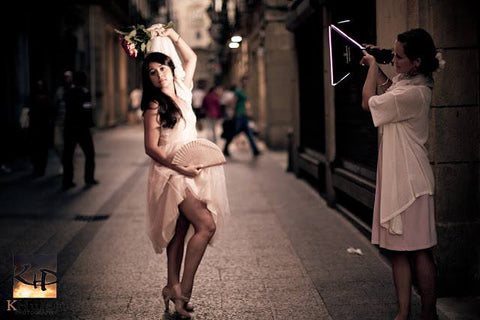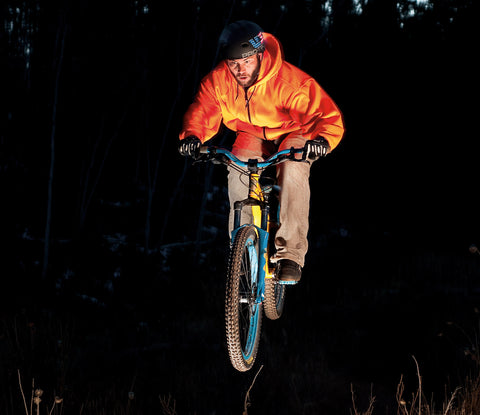Becoming a professional freelance photographer is a dream for many. It seems so simple, you take great photos and people will buy them for you or pay you to shoot for them specifically.
Clients may even hire you to photograph an event. The catch however, is that you need to find those people. They won’t just find you, even though you've built a great website….
So what exactly is freelance photography? The concept of freelancing is built around working for multiple different clients and contracts. Unlike a traditional job where you have one boss, you essentially choose everything you want to do and find your own photography clients. You get to be your own boss, but in reality, each client is like a boss for each shoot.
Starting a career as a freelance photographer is a serious endeavor. It’s not something that will just happen by mastering photography. And it certainly isn’t as simple as buying all the top gear to look like a pro.
One of the best business tips that we’ve ever been given was to find a paying client before you really pursue the new career. If you can find someone to hire you, scramble and get only the gear you need for that specific job and take it from there. It will prove that you can land a client and make pro photography a job and not just a fun hobby.
There’s a lot to starting a business in freelance photography. With our 17 tips you’ll have a great idea what is really involved. Hint: It’s not all about gear and being the best photographer. It’s about building a real business. Business techniques DO apply to photographers even though we don't think they do because we’re artists….
And while we are on that subject, here’s an interesting thought: The best freelance photographer in the world might never make any money, and some of the worst may make a great living. The difference between the two is simply sales and marketing (BUSINESS). Here's a great book that can help you see things from a new perspective: Real Artists Don't Starve
We hope you choose the path of being one of the world’s best freelance photographers who also makes a great living. The choice is yours!
1. Finding Clients for your freelance photography business is your #1 focus.
Yes, it’s important to learn the art and feel comfortable shooting. But just knowing the art and being an incredible photographer won’t pay the bills. Landing clients (AKA SALES) is the single most important part of your job. Once you have said clients you should always strive to improve your art form.

2. Buy some business books.
Especially books focused on sales and managing clients. With no sales there’s no business. There’s three key components to keeping clients happy: Communication, Quality of Work, Timeliness. Master all three and you’ll keep your clients for a long time.
3. Find your freelance photography niche.
There are so many possibilities out there! Do you want to shoot weddings in the mountains? Are you going to be the world’s best architectural photographer? Senior portraits? Action Sports? Choose one so you know who to contact for work and you can master that specific art and pricing structure.
4. Contact clients and potential clients again and again.
With existing clients you can add reminders to your calendar and reach out every month or two to ask how they are doing and if they have any photo needs. You’ll be surprised by how well this works. It will drive you more and more jobs and keep you afloat. Keeping a client is far less expensive and easier than trying to find new ones.
5. Price high at the start.
If clients want lower prices they’ll let you know. Or they’ll say they aren’t interested and you can ask why. When they say it’s because of the price you can try to adjust. Price low and you’ll regret the job when you’re working too hard for too little.

Copyright Kevin and Katie Hulett
6. You don’t need the best camera money can buy.
Look for something that produces great quality and has the features specific to your niche (i.e. fast frame rate for action sports, high MP count and large sensor for portraits). Camera technology changes quickly but it’s gotten so good across the board that a $1200 body can make images that are just as great as a $5000 camera body. Invest in lenses since they stand the test of time and have the best resale value (sometimes even increasing!)
7. Go to the online forums for your niche.
You’ll learn a lot about what they do, how they talk, their needs, and after participating in the forums, you’ll be able to mention the new business you’re starting! It’s a good way to get into your clients minds and find what they really are looking for. Researching clients is a step most freelancers never seem to remember. On that note, reach out to some competitors in a different city and get a quote for a fictional shoot. It’s always nice to see how the competitors handle new leads, especially the successful ones.
8. Get a SquareSpace website AFTER you've landed some paying clients, or make your own with Photocrati through Wordpress.
Both are great options and fairly cheap to start. Even if you have very little work to show, you can have a landing page with your bio and pricing to send potential clients. Websites make businesses look more established and trustworthy. You don’t have to have one right away, but it’s good to get rolling down the line. Certainly don’t spend any time on this for your initial month. Instead you should focus on outreach to friends, family, and acquaintances.
9. Set business goals.
Skyscrapers are built first with a foundation, and then one floor at a time. If you want to build an empire, you have to start with a foundation. Maybe the first week you’ll reach out to 15 potential leads to see if they have photo needs. Each goal should be attainable but also push you out of your safe zone for the week. Once you reach a goal, don’t stop there. If it worked well take it to the next level and continue growing your business.
10. Strive to keep a minimum livable amount of savings.
With enough saved the occasional bad month won’t crush you and leave you selling gear or searching for a day job. It doesn’t have to be a lot and honestly having less will motivate you more, but it’s nice to have that cash buffer.
11. Track mileage, photography expenses, and freelance income.
Both expenses and mileage will give you a break on your taxes, and we can all use a break. You’re gear is expensive and it will help you a lot come tax time. Another important note here is to SAVE about 35% of every payment you receive in an account that you won’t touch. This way you’ll have taxes covered no matter what. When you work for someone else they typically do this part for you, but on your own you have to remember to save for taxes. Even though it hurts to put that money aside you’ll be thankful later.
12. Save your money when you start out!
Everyone makes the mistake of buying business cards they don’t hand out or that just get thrown away. Other common expenses that are unnecessary from day one include: websites, stickers for branding, logo costs (seriously, you don’t need a logo yet, and likely never will), software, unimportant gear, and on and on. Focus your time on building a business through sales, not branding. No one will be concerned with your brand as a freelancer, just your name and work quality.

Copyright Kevin and Katie Hulett
13. Shoot everyday.
Take your camera with you anywhere you go and photograph anything that catches your eye. We are in the digital age so you aren’t wasting any money or resources by taking more photos. You’re learning and your camera will become a true extension of your body. Every shot provides instant results so you can see what works and looks good, and what doesn’t. The better you know the camera the more comfortable you’ll be working with paying clients.
14. Listen to your client.
If they have a clear vision for the image they want and try to direct you, do what they say first. You can get creative after the shots they need. Show them you care and trust their judgement and they will be happy to work with you. Sometimes the shot they visualized is the best photograph possible. As freelance photographers, we are artists. It’s tough to let go of our artistic visions sometimes. There are times when clients need something specific and they hired us for just that reason. Work WITH your clients, never against them.
15. Always overestimate how long it will take you to finish the edits.
This leaves the client happier. Set your actual delivery deadline (without telling them) to a few days earlier. They will be so excited when the images are sent over early and appreciate you putting the time in to rush the order. This is a nice way to guarantee happy photography customers.
16. Be CLEAR on your pricing for photo services.
Even if you never reveal your methods to a client or show it anywhere on your website. Knowing how much to charge for a specific type and length of shoot will help you avoid underpricing. Whether it’s by the hour or by the shot, set up a number and write it down somewhere. Simply multiply to what the client is asking for and give them a final price. If it doesn’t work with them have a number you’re comfortable going to and don’t go any lower. If they really want to work with you, they will pay what you ask.
17. Stay confident.
We all have insecurities and sometimes it feels like clients and companies are more important than we are. Keep in mind that we are all people just trying to make a good living for ourselves and our families. No matter what a client’s position is or how important they are, you are the one they are hiring. You have something to offer them that they can’t do themselves, even if you’re only marginally better. Better is better and you are providing a great service.
This is also important to keep in mind when you price your services. Don’t go lower just because other photographers do, would you rather work for high-end high paying clients, or low-end clients that always want a deal? If you aren’t confident and undervalue yourself then you get stuck in the low-end deal seeking realm of freelance photography. And no one wants that…
The most important lesson in all of this? Get out and find clients.
Hands down the number one way to be successful at any business, and always the most overlooked. It’s crazy how we think that because we are good photographers the clients will come to us. There’s a lot of great photographers out there, and there always will be. Your photography should be amazing, but your business should be as well. If you want to succeed in freelance photography than you’ll need to create a real business.
Hopefully this helps to inspire you and set you on the right path. It can be a letdown to realize how much of this art is business, but don’t let that ruin it for you. Let us now if you have any questions or additional tips and we are happy to hear them in the comments!



